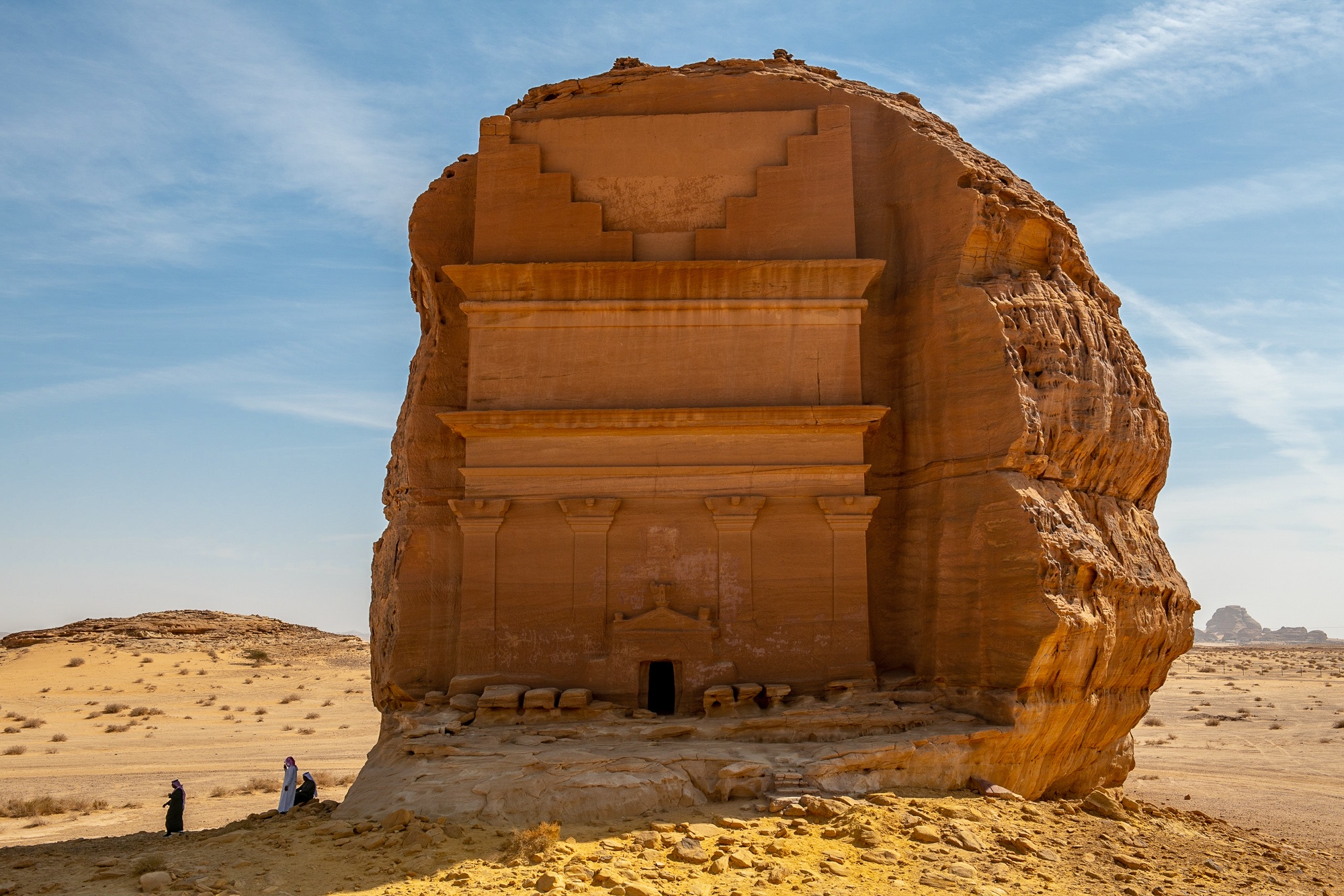History & Heritage
7.29.2019
Exhibition: Al Ula, Wonder of Arabia

The Al Ula region of Saudi Arabia represents a deep well of knowledge of the kingdom’s heritage. This is the reason why the Arab World Institute in Paris is dedicating an exhibition to it at the end of 2019.
From October 9, 2019, to January 19, 2020, the Arab World Institute in Paris opens its doors to visitors wishing to learn more about Al Ula. The area is indeed of primary importance in the kingdom for various reasons.
In addition to its beauty characterized by the contrast of colors – the green of the oasis blends with the ochre of the sand, the red of the canyons and the black of the volcanic stone -, the site is also a considerable source of information on the different successive peoples that have lived there.

From the Neolithic to the common era
More than 7000 years of history… So is the journey undertaken by anyone who traces the remains proposed by Al Ula. The Neolithic peoples, the kingdoms of Dadan and Lihyan, the Nabataean civilization, the Roman empire, the Umayyad and Abbasid caliphates, the Ottomans… have all left a trace of their passage in the region which was once one of the most fertile on earth. And the remains of these eras are admirably preserved.
In terms of archaeology, this is the largest project of the last two decades, undertaken by the two curators of the exhibition: the French archaeologist Laïla Nehmé, and the Saudi archaeologist Abdulrahman Alsuhaibani.
Nature and human
The exhibition will highlight these two aspects. Based on the work of the distinguished Yann Arthus Bertrand, which will be presented as a preamble to the visit, it will then highlight the Nabataean civilization by organizing a funeral ceremony in a replica of one of the famous graves of Hegra, a UNESCO World Heritage site similar to Petra in Jordan.
In addition, statues and numerous archaeological objects decorate the exhibition and highlight the region’s rich heritage. For the first time, an inscription dating from 280 BCE, a real missing link between the Nabatean and Arabic alphabets, will be presented to the public. A unique testimony to the birth of the Arabic language.
The exhibition ends with a “guided tour” of the old city of Al Ula, inhabited for 8 centuries by indigenous communities and pilgrims on their way to Mecca, as well as farmers.
Finally, an authentic local garden will be recreated on-site, in the heart of which visitors will be invited to walk around, in order to discover the scents of Al Ula (dates, figs, moringa) thanks to olfactory installations. A sensory experience all in immersion.

“A crossroads between three continents”
Welcoming the exhibition, Prince Badr bin Abdullah bin Mohammed bin Farhan Al Saud, Governor of the Royal Commission for Al Ula, said: “We are delighted that the first international exhibition dedicated to the inhabitants, heritage and history of Al Ula is being launched at the Arab World Institute. A true crossroads between three continents and the former gateway from Arabia to the Mediterranean, Al Ula is home to some of Saudi Arabia’s most important cultural and historical sites. This exhibition expands the global understanding of Nabataean, Dadaite and ancient Islamic civilizations and supports our mission to conserve the important heritage of AlUla for future generations.
popular

